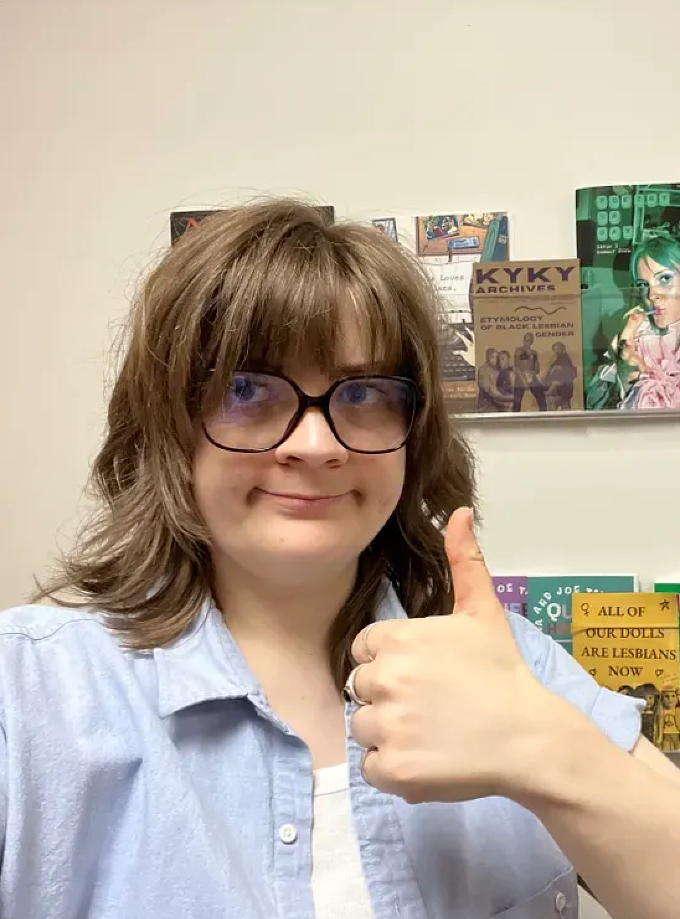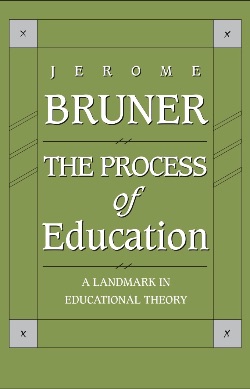July 18, 2025
Teaching
Zines can help us reshape what we teach for.

Abby Schleifer with a curation of queer zines. Librarians, she says, have always been early adopters: “Librarians have always been on the front lines of tech. We were some of the first to bring in the internet, to teach databases, to help people navigate search when that was still a skill. The idea that AI makes libraries obsolete completely misses the point.”
Abby Schleifer is the First Year Outreach Services Librarian at Pace University’s Birnbaum Library. In May, she shared a short reflection in her newsletter:
“Hey, I work with college students often. Do you know what brings their attention back to the surface after years of Zoom classes, Generative AI cheating, and smartphone overload?
Zines. Freaking zines. You hand one to an undergrad and say, ‘Someone like you made this. You could make this. All you need is some found images, paper, scissors, glue, and your imagination. No ChatGPT necessary.’
They light up—every single time.”
The post struck a chord. With nearly 6,000 likes and hundreds of comments, educators and students voiced a shared hunger for tactile, expressive, unmediated authorship. The response led writer Carly Ayres to profile Abby and her work. “After semesters of screen fatigue and click-to-submit coursework,” Ayres writes, “zines offered a potential answer to a growing question: how do we bring students back into the classroom?”
"Zines and AI aren’t at odds, Abby says, they’re parallel modes of inquiry. “We have to explore both,” she says. “Students already are.” Some of the most enthusiastic zine-makers on campus are computer science majors, toggling between Python scripts and collaged covers. To them, zines aren’t just a screen break, they’re a way to write, draw, collage, and communicate without predictive text or algorithmic interference.
"The real opportunity, she believes, isn’t replacing teaching with LLMs, but reshaping what we teach for: 'If you’re only preparing students for knowledge work and that work gets automated, what are you preparing them for?' she asks. 'Higher education can’t just be about career prep. It has to be about meaning-making.'”
ARTICLE: Paper Cuts Over Cut-and-Paste




